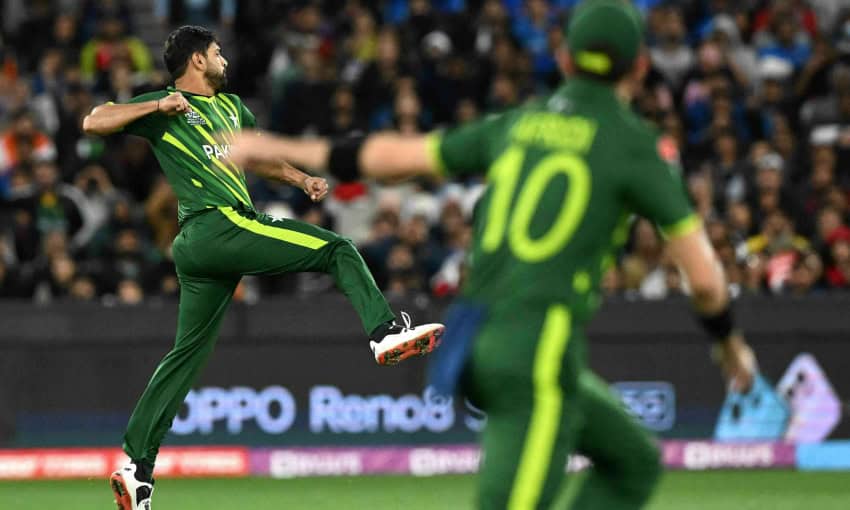Since its inception in 2007, the T20 ICC World Cup has been a thrilling roller-coaster ride for cricket fans worldwide. Pakistan, a cricketing powerhouse, has played a significant role in the tournament’s history. With a blend of exhilarating victories and heartbreaking defeats, Pakistan’s journey in the T20 World Cup encapsulates the passion and unpredictability of the sport.
Participation and Performance
Pakistan has participated in every T20 ICC World Cup, from its commencement in 2007 to the latest edition in 2024. Here’s a breakdown of Pakistan’s performance over the years:
1. 2007 – Runners-up: Captained by Shoaib Malik, Pakistan reached the final but lost to India in a nail-biting finish.
2. 2009—Champions: Under the leadership of Younis Khan, Pakistan clinched its maiden T20 World Cup title, defeating Sri Lanka in the final.
3. 2010 – Semi-finals: Shahid Afridi led the team to the semi-finals, where Australia defeated them.
4. 2012—Semi-finals: With Mohammad Hafeez as captain, Pakistan again reached the semi-finals but lost to Sri Lanka.
5. 2014 – Super 10: Pakistan, captained by Mohammad Hafeez, did not progress past the Super 10 stage.
6. 2016 – Super 10: Shahid Afridi returned as captain, but the team failed to advance beyond the Super 10.
7.2021 – Semi-finals: Babar Azam led Pakistan to the semi-finals, where Australia defeated them.
8. 2022—Runners-up: Pakistan, under Babar Azam’s captaincy, reached the final but lost to England.
9. 2024 – Group Stage: Babar Azam once again led the team, but Pakistan failed to qualify for the Super 8, marking a significant downturn.
Venues of the T20 World Cups: A Global Showcase of Cricket
The T20 ICC World Cup has been hosted across various continents, each offering a unique backdrop and cricketing culture. The geographical locations of these tournaments have played a significant role in shaping the dynamics of the competition.
2007: South Africa – The inaugural T20 World Cup was held in South Africa, known for its vibrant cricket culture and scenic stadiums. The tournament capitalized on South Africa’s infrastructure and enthusiasm for the sport, setting a high standard for future events.
2009: England – England, the birthplace of cricket, provided a historic and passionate environment. The lush green grounds and enthusiastic crowds added to the tournament’s charm, culminating in Pakistan’s memorable victory.
2010: West Indies – The Caribbean islands brought a festive atmosphere with their laid-back vibe and love for cricket. The West Indies’ unique stadiums, such as those in Trinidad and Barbados, offered picturesque settings and a carnival-like experience.
2012: Sri Lanka – Hosting the tournament in Sri Lanka showcased the country’s genuine cricket fans and tropical beauty. Stadiums like Colombo’s R. Premadasa Stadium highlighted the country’s rich cricketing tradition.
2014: Bangladesh – Bangladesh’s hosting underscored the nation’s growing status in world cricket. The passionate local supporters and the compact, enthusiastic venues created an electrifying atmosphere.
2016: India – Cricket’s biggest market, India, hosted the 2016 edition with grandeur. The tournament leveraged India’s massive fan base, state-of-the-art stadiums, and deep-rooted cricket culture, making it a spectacular event.
2021: United Arab Emirates and Oman – The UAE and Oman offered modern facilities and emerging cricket enthusiasm. The Middle Eastern venues provided excellent conditions and drew significant expatriate crowds.
2022: Australia – Known for its world-class facilities and competitive cricketing environment, Australia hosted the tournament with matches played in iconic venues like the Melbourne Cricket Ground (MCG) and Sydney Cricket Ground (SCG).
2024: United States and West Indies – Including the United States alongside the West Indies highlighted cricket’s expanding global reach. While the West Indies brought their traditional flair, the US offered a new frontier for the sport, aiming to tap into a fresh market and diverse fan base.
Each venue has contributed to the T20 World Cup’s global appeal, bringing different styles, cultures, and atmospheres to the tournament, thus enriching the cricketing experience for players and fans alike.
Triumphs and Heartaches
The pinnacle of Pakistan’s success came in 2009 when they lifted the T20 World Cup trophy in England. Younis Khan’s leadership and the exceptional performance of players like Shahid Afridi, who was the Man of the Match in the final, were instrumental in this victory. This triumph brought immense joy to the nation and marked Pakistan’s dominance in the shortest-game format.
Pakistan finished runners-up in the 2007 and 2022 tournaments, losing to India and England, respectively. These close encounters highlighted Pakistan’s ability to perform under pressure, underscoring the thin line between victory and defeat in T20 cricket.
The 2024 Disappointment: A Nation’s Dismay
The 2024 T20 World Cup was a significant low point for Pakistan cricket. Failing to qualify for the Super 8 was a bitter pill for a cricket-crazy nation. Several factors contributed to this dismal performance:
1. Team Selection: Controversial selections and the omission of key players created unrest and impacted team cohesion. Talented youngsters were either overlooked or not given enough opportunities to prove themselves.
2. Politics in the Cricket Board: Internal politics and power struggles within the Pakistan Cricket Board (PCB) distracted from the primary focus of building a strong team.
3. Unprofessional Management: The lack of a clear strategy and professional management led to inconsistent performance. Frequent changes in coaching staff and support personnel disrupted the team’s rhythm.
4. Favouritism: Allegations of favouritism in player selection undermined team morale and performance. Merit-based selection took a backseat to personal biases and external influences.
5. Lack of Planning: Inadequate preparation and poor execution of game plans were evident. The team seemed ill-prepared for the challenges posed by international opponents.
Moving Forward: Lessons to Learn
A thorough overhaul is needed for Pakistan cricket to regain its lost glory. This includes:
– Transparent Selection Process: Ensuring merit-based selection and equal opportunities to all deserving players.
– Stable Management: Appointing a stable and professional team focusing on long-term goals.
– Strategic Planning: Developing comprehensive game plans and ensuring meticulous preparation for major tournaments.
– Nurturing Young Talent: Investing in grassroots cricket and nurturing young talent to build a strong foundation for the future.
Conclusion
Pakistan’s T20 ICC World Cup journey is a tale of glorious victories and devastating losses. While the 2024 World Cup was a setback, it offers introspection and rebuilding opportunities. With the right strategies and a commitment to excellence, Pakistan can once again rise to the pinnacle of T20 cricket, rekindling the hopes and dreams of millions of passionate fans.
*Note: The T20 World Cup is held intermittently, not annually, so some years did not feature the tournament. The gaps between some tournaments reflect the ICC’s scheduling.














